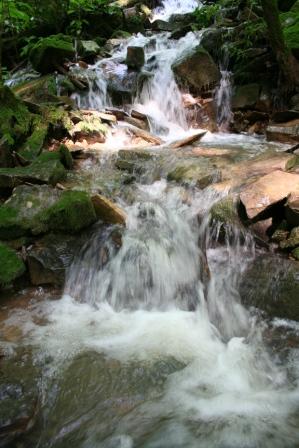Some people have always known that trees have value, but now a dollar value has been put on them.
Now, for the first time, the [New York City] Parks Department can actually translate the value of the city’s trees into real dollars and cents. And as expected, it’s a big number.
Step 1 was a tree census, a two-year process that sent more than 1,000 volunteers to count every tree on every street in the [New York] city. The census results were then fed into a computer program that spit out a dollar value for each of the 592,130 trees counted, a figure that does not include the roughly 4.5 million trees in parks and on private land.
The program, called Stratum, was developed by researchers at the University of California at Davis and the United States Forest Service. It takes into account several factors, including a tree’s impact on local property values, its contribution to cleaning the air by absorbing carbon dioxide, and how much its shade helps reduce energy consumption.
Factoring in the costs associated with planting and upkeep, New York City’s street trees provide an annual benefit of about $122 million, according to the Parks Department. The study concludes that New York receives $5.60 in benefits for every dollar spent on trees.
Considering the enhanced root system of EMI trees absorbs 18x more carbon dioxide than other trees, I'd like to see their benefit / cost ratio.
Now, for the first time, the [New York City] Parks Department can actually translate the value of the city’s trees into real dollars and cents. And as expected, it’s a big number.
Step 1 was a tree census, a two-year process that sent more than 1,000 volunteers to count every tree on every street in the [New York] city. The census results were then fed into a computer program that spit out a dollar value for each of the 592,130 trees counted, a figure that does not include the roughly 4.5 million trees in parks and on private land.
The program, called Stratum, was developed by researchers at the University of California at Davis and the United States Forest Service. It takes into account several factors, including a tree’s impact on local property values, its contribution to cleaning the air by absorbing carbon dioxide, and how much its shade helps reduce energy consumption.
Factoring in the costs associated with planting and upkeep, New York City’s street trees provide an annual benefit of about $122 million, according to the Parks Department. The study concludes that New York receives $5.60 in benefits for every dollar spent on trees.
Considering the enhanced root system of EMI trees absorbs 18x more carbon dioxide than other trees, I'd like to see their benefit / cost ratio.

EMI Sycamore Trees Ready for Planting
 While this project is great for Allatoona Lake, it will hardly make a dent in the millions of acres of longleaf pine ecosystem that have been lost in the last 50 years. Many other parks and refuges are also planning longleaf pine restorations.
While this project is great for Allatoona Lake, it will hardly make a dent in the millions of acres of longleaf pine ecosystem that have been lost in the last 50 years. Many other parks and refuges are also planning longleaf pine restorations.

 Other portions of the bank were lined with sandbags filled with air-pruned grasses interspersed with air-pruned trees. The sandbags hold soils in place long enough for the grass and tree root systems to become established. Then, air-pruned root systems hold soils in place and the grasses and trees provide roughness which dissipate energy.
Other portions of the bank were lined with sandbags filled with air-pruned grasses interspersed with air-pruned trees. The sandbags hold soils in place long enough for the grass and tree root systems to become established. Then, air-pruned root systems hold soils in place and the grasses and trees provide roughness which dissipate energy. Bank roughness from grasses and trees dissipates energy, which slows velocities and allows sediments to drop out of flow building banks instead of eroding them.
Bank roughness from grasses and trees dissipates energy, which slows velocities and allows sediments to drop out of flow building banks instead of eroding them.